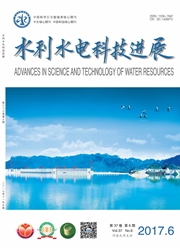

 中文摘要:
中文摘要:
针对目前海洋环流模式预测能力存在的不足,从雷诺应力方程着手,归纳和阐述了二阶湍流闭合模式中压力项、扩散项和耗散项的改进与发展,分析和讨论了各种改进格式对模型完善和预测能力的影响,同时分析了波浪混合作用对环流封闭格式的影响,并对海洋环流模式中二阶湍流封闭格式发展进行了简要综述。压力项的改进主要集中于压力项中各影响量的添加,使得可以模拟的湍流的理查森数Ri趋近1;扩散项的改进主要通过改善湍流能量扩散的第三稳定函数Sk 来完成;对于耗散率的改进更多是基于经验,用与理查德森数相联系的阶梯型函数可以有效模拟强分层流;环流模式中通过模拟波浪对垂向扩散系数的影响和在紊动动能方程中考虑波浪破碎耗散的能量的注入,都可以从物理机制上改善目前模式所模拟的混合层太浅和温跃层强度偏低的共性问题。
 英文摘要:
英文摘要:
A brief review of the development of second-order turbulence closure is presented aiming to overcome the two deficiencies in the prediction of the ocean circulation model. The paper begins from Reynolds stress equations, analyzes and summarizes the improvement and development of pressure relations term, diffusions term, and dissipations term aiming at stating the effects of the terms on the prediction ability of corresponding turbulence closure. Finally, the different ways to consider the wave mixing in ocean circulation model are discussed as well. The improvement of pressure correlation focuses on adding the relative terms such that the Richardson's number of the turbulence approaches 1. The diffusion term is improved by the third stability function Sk . The improvement of dissipation relies on the empiricism by using the Heaviside step function to simulate the strong stable stratified flow. In simulating the wave impact on the vertical diffusion coefficient and injecting energy dissipated in wave breaking into turbulent kinetic energy equation, the two general problems-too shallow mixing layer and the low intensity of the thermocline-may be improved physically.
 同期刊论文项目
同期刊论文项目
 同项目期刊论文
同项目期刊论文
 期刊信息
期刊信息
